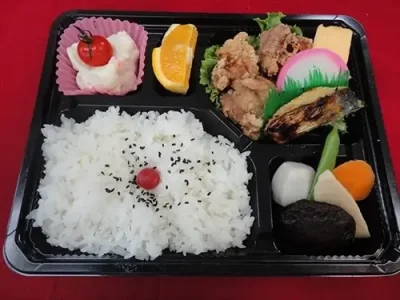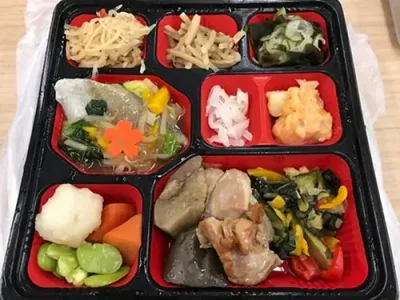Bento is the Japanese word for a meal served in a box. The boxes form an integral part of food culture in Japan, which cannot be simply traced from a packed meal. The word bento means the ‘useful thing’, ‘convenient’, and it has a double meaning, standing for both the container and the content. Nowadays bento boxes are known all over the world thanks to social media. You have probably seen some true bento artists who show how pretty you can make a lunch or dinner look.


History
The tradition of preparing conveniently packed meals dates back to the late Kamakura period (1185 to 1333). This was when dried rice was prepared to be eaten outside. The habit eventually spread to high society as well. It became a convenient meal for travelers during the Edo period. More importantly, it also became a must for outdoor excursions, tea parties, and theater since plays could last several hours.
What’s in a Great Bento?
A bento box is usually divided into several parts that can hold several dishes, typically including:
-Rice: This is the base ingredient of just about every bento. The rice can be prepared in several ways, such as hakumai (standard white rice), genmai (brown rice), sekihan (rice cooked with red beans), zakkokumai (rice with mixed grains), noriben (rice covered with a sheet of nori seaweed), and wakame gohan (rice mixed with seaweed).
-Umeboshi: pickled sour Japanese plums.
-Salads>: Vegetables and salads are often chosen to reflect the season.
-Tamagoyaki: a sweet Japanese rolled omelet.
-Agemono: Deep-fried foods include chicken karaage, tempura, croquettes, and fried fish cakes.
–Tonkatsu: Fried pork cutlet.
-Grilled fish: Typically mackerel, salmon, or eel.
-Nimono: Slowly simmered fish, meat, or vegetables.
-Stewed beef: Gyudon, a flavorful layer of beef served atop a bed of rice.
–Sushi: A Japanese staple, typically raw seafood served on top of a pressed rice ball.
The dishes are usually prepared and packed in a way so they will not move when the box is carried and so they will stay good in the environmental temperature. The most important characteristic is certainly the visual presentation based on color assortment. Let’s see some emblematic examples:
-Ekiben: A packed meal sold at railway stations.
-Makunouchi bento: the traditional style of bento that was served at the theater. It contains several dishes: rice, meat, fish, egg, a pickled plum, and vegetables.
-Hinomaru bento: Resembles the Japanese flag with a pickled plum being in the center of the rice.
Where to Buy
Also for foreign tourists, a bento can be a very convenient way to have lunch or dinner on the go. The price of bento generally varies between 500 to 1000 yen depending on the ingredients and where it is purchased from. There are certain stores that sell bento for only 300 yen, and supermarkets at night generally lower the prices of the remaining bento by almost half. Some of the stores where bento can be purchased are:
List of Popular Bento Shops
-Tenya: Tenya offers a wide selection of cheap tempura (deep-fried fish and vegetables) dishes.
-Hotto Motto: A great bento shop, offering all sorts of food.
-Any convenience store: Most types of Japanese food are covered, from curries to noodles.
-Supermarkets: Almost all supermarkets have a designated section of bento and they are affordable.
-Origin Bento: Many items only cost 390 yen, and there are often special discounts. Most are rice-based bento boxes.
Also if you would like to be able to make a bento back home it is a good idea to shop for necessary items in Japan. You can find plenty of nicely designed bento boxes, and in the 100-yen shops, you can find all kinds of bento paraphernalia to make them look even better.
Your Japan Tour
As seasoned Japan experts, we create perfect Japan package tours including carefully selected local restaurants. Check out our group tours and private tours, or contact us to start planning your unforgettable holiday to this fascinating country full of once-in-a-lifetime experiences, culture, history, nature, and delicious food!